Time to share some of the failures in my permaculture garden! This season I was overly optimistic that everything would work out according to plan. Of course, reality caught up with me… Gardening in general is quite notorious as being a failure-prone activity. Besides this, working with permaculture principles in your garden does not safeguard you against failures either. Rather it’s how you deal with them that might differ a little. Let me share with you what I mean by that.
Failures?!
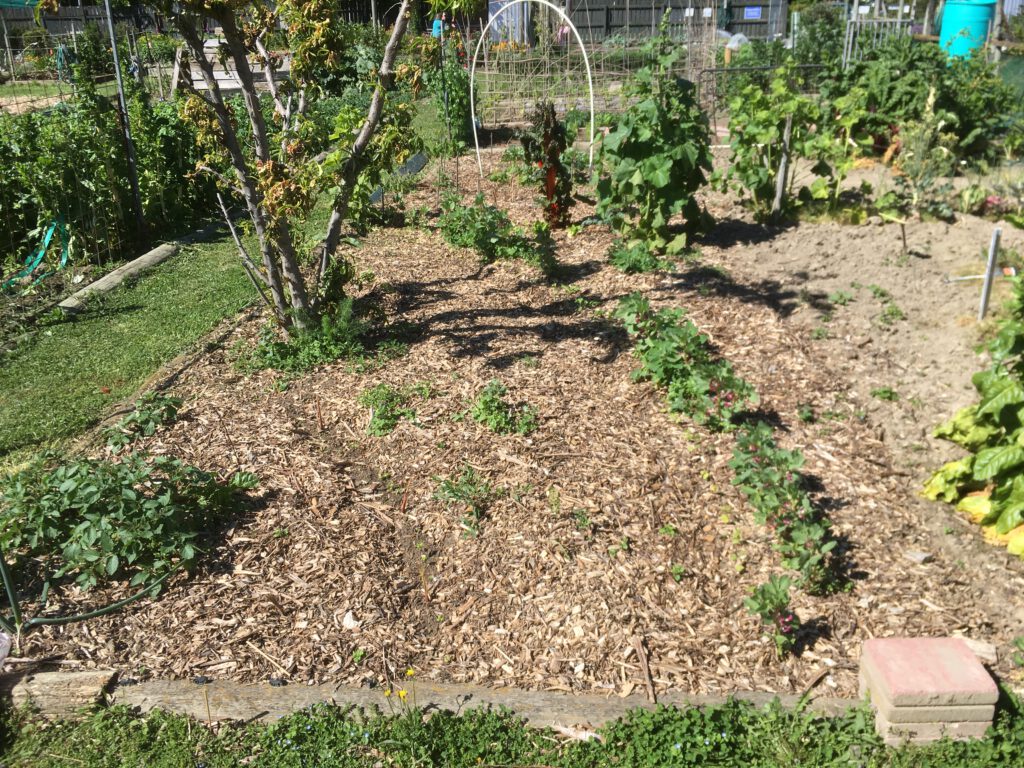

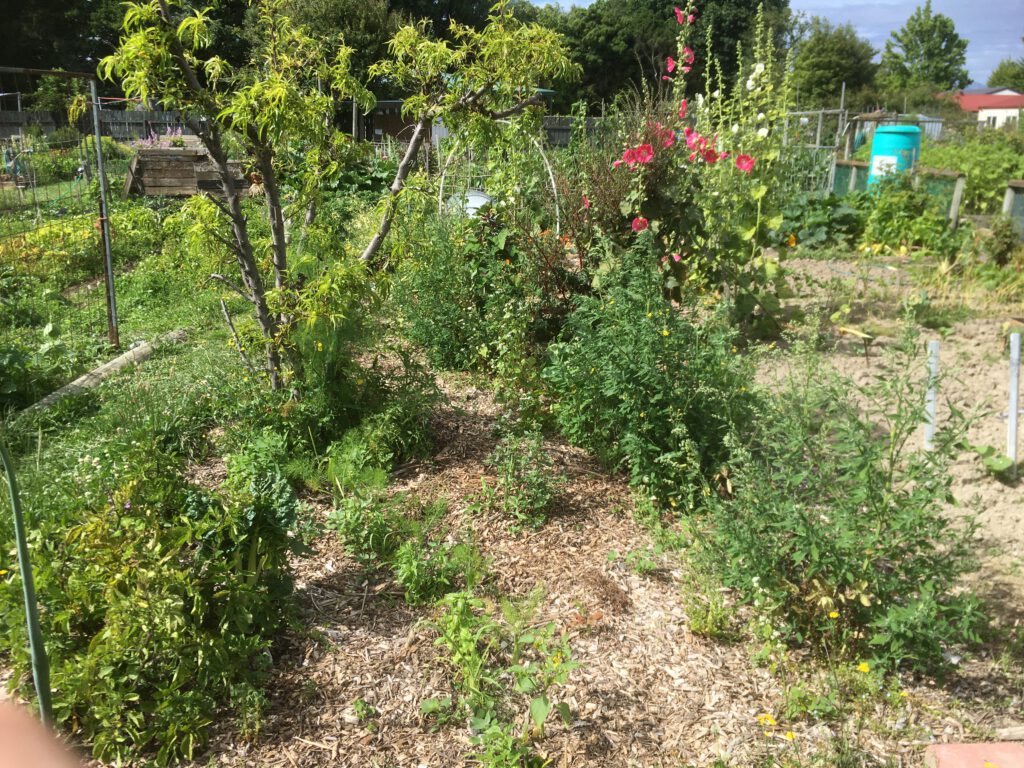
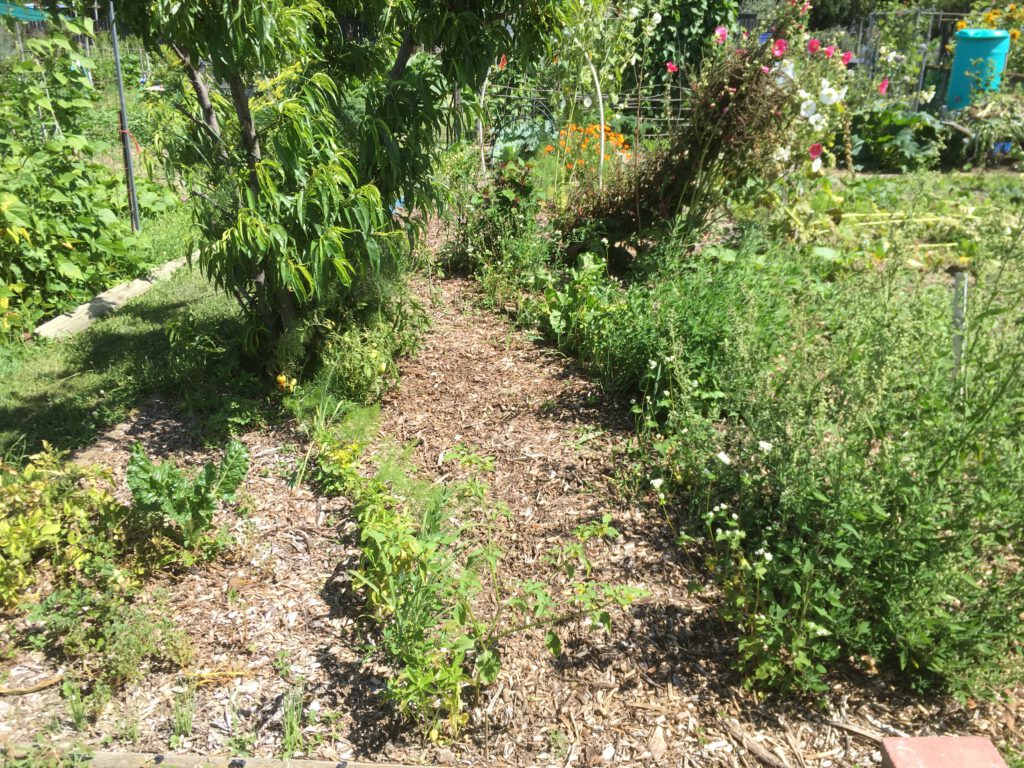
It’s a relatively small garden, but holy smokes can it feel overwhelmingly big sometimes! Especially when the “weeds” start to present themselves abundantly. The mulch is doing a relatively good job at slowing them down, yet despite this they are making their presence known (more on that below).
As you can see in the pictures above, there’s so many gaps, nooks and crannies that have been left open this season. The peach tree to the left also hides a large part of the garden, allowing my wee permaculture garden to look full from this side whilst that’s definitely not the case.
Instead of letting the garden overwhelm me and call it quits, I allowed this season and new location to provide plenty(!) of opportunities to observe and learn.
More plants please
One of the things I’ve learnt, or rather I’ve been reminded of: you can never start too much plants from seed.
I’ve made an attempt at playing catch-up. Sowing more of the seeds that I still had. For some plants this works fine. For example, beets, parsnips, and other root crops as well as most members of the brassicaceae don’t mind a late start in the season. These can easily be sown late in summer, and even going into fall. Some plants even prefer an early or late sowing, thereby avoiding the long hot summer days.
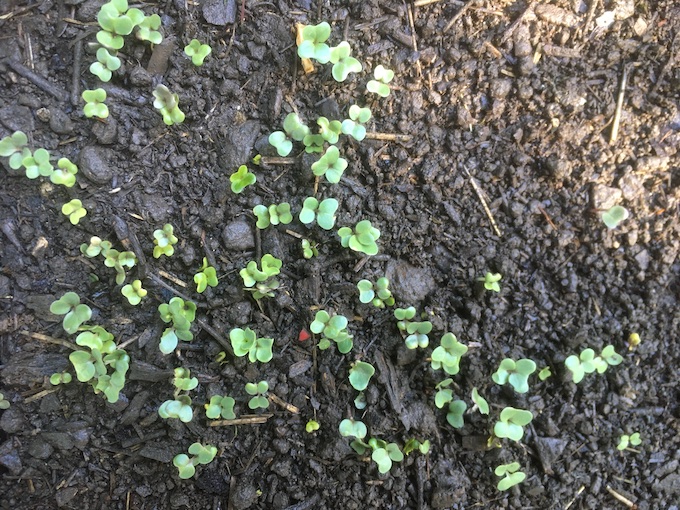
Worst case, you may end up having too many plants (although I wonder if that’s actually possible). Allowing you to give them away, guerilla plant them or save for later in the season. Yet, despite my best efforts to make up for some of the lost space, plenty of opens area remained. And, more often than not, open areas in nature will be filled.
How to deal with weeds?
Any area of your garden that you don’t cultivate, will be cultivated for you. This is where the concept of weeds come in. They’re often defined along the lines of: “a wild plant growing where it is not wanted and in competition with cultivated plants”.
In my opinion, over her long existence Planet Earth has devised a pretty successful formula. Striving for ever more diversity, filling each niche and possible space with life and encouraging cooperation where possible.
This is also why your freshly prepared garden bed will, in a short amount of time, be ram-packed with plants you didn’t necessarily plan for. The “not wanted” part of the definition is key here. Generally, most plants can readily grow together without hindering each other too much. Nonetheless there’s cases where these volunteers will take over, are poisonous or unwanted in another way.
One method to deal with this is a famous permaculture technique called ‘chop ‘n drop’. A lovely straightforward name: chop the plants, preferably as close to the ground as possible, and drop them either right then and there. Or, you can also then use the chopped material to mulch around other plants. In my case, I then covered with another layer of woodchips as this was supposed to be a pathway.
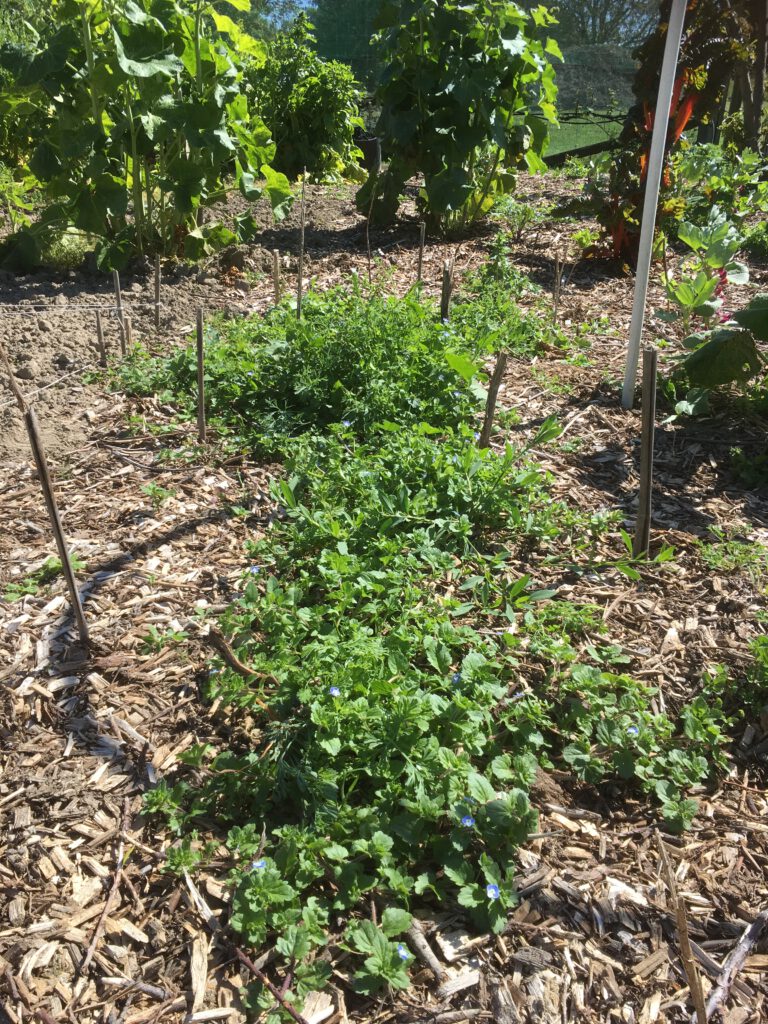
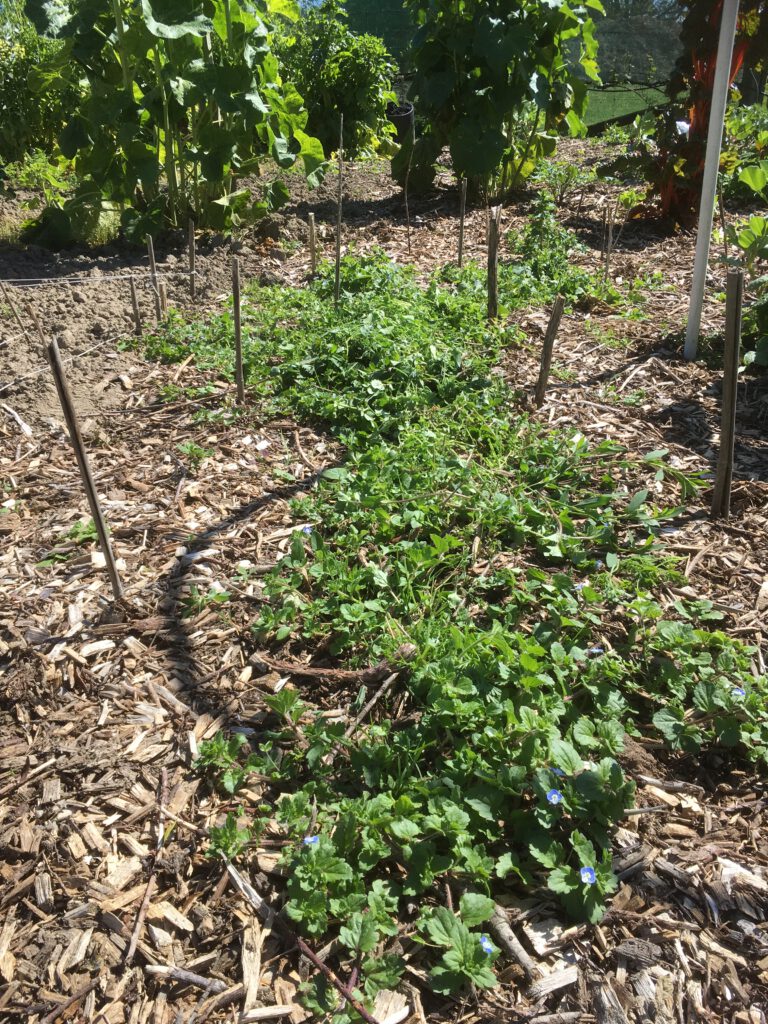
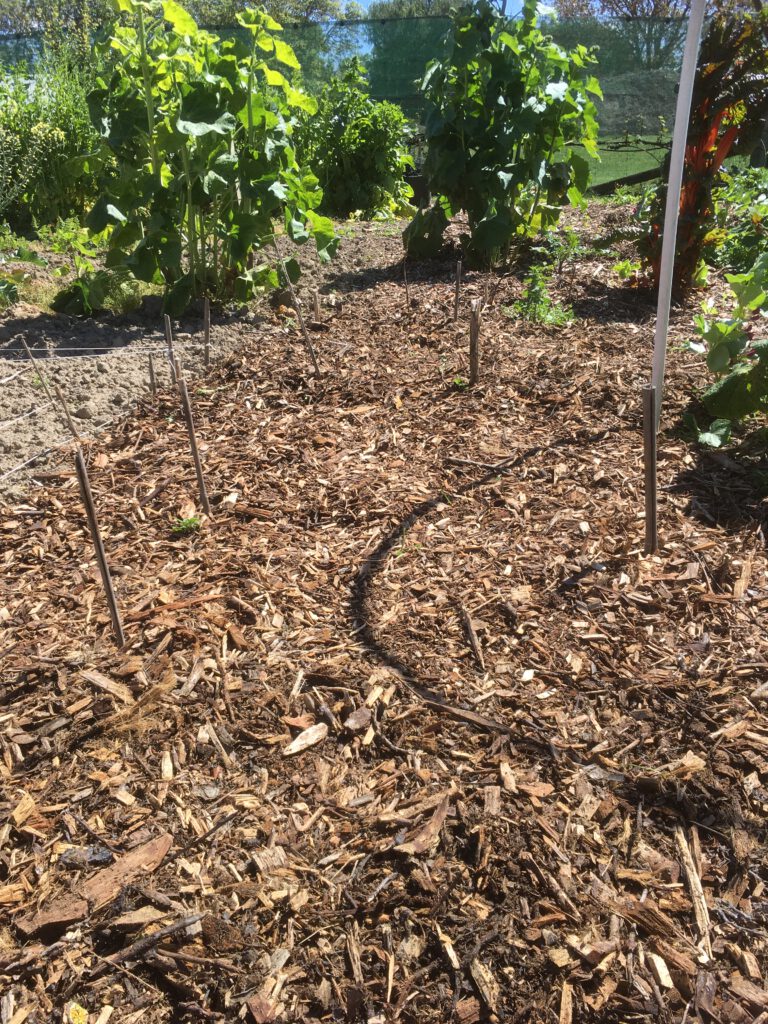
Failures or opportunities?
Taking this concept a step further is the realisation that each plant serves a function. That’s why I mostly put “weeds” in parentheses because it really is just a matter of perspective. Often I will allow some of the “unwanted” plants to grow freely. Observing what they do, how they grow and getting to know who they are. They voluntarily show up without any effort on my side.
Not always is their function in service of the plants and garden us humans are trying to grow, hence the chop ‘n drop. However, there’s also a huge group of plants that are now thrown into the “weeds” category because we’ve forgotten (or ignore) how nutritious, helpful or otherwise functional they are. That’s why I prefer to call them volunteers. Working with volunteers is about learning to see qualities, dealing with complex relationships and accepting that you can’t control everything.
If you can’t beat ’em, eat ’em!
For example, goosefoot / fat hen / lamb’s quarters is an annual plant that showed up profusely in my garden. I’d already met this plant before and learnt that the (young) leaves are edible. However, it’s sheer abundance meant I needed to do more research into the possibilities it offers. Besides the leaves, you can eat the young flower heads (inflorescences) as broccoli and dry the seeds to use in a myriad of ways.
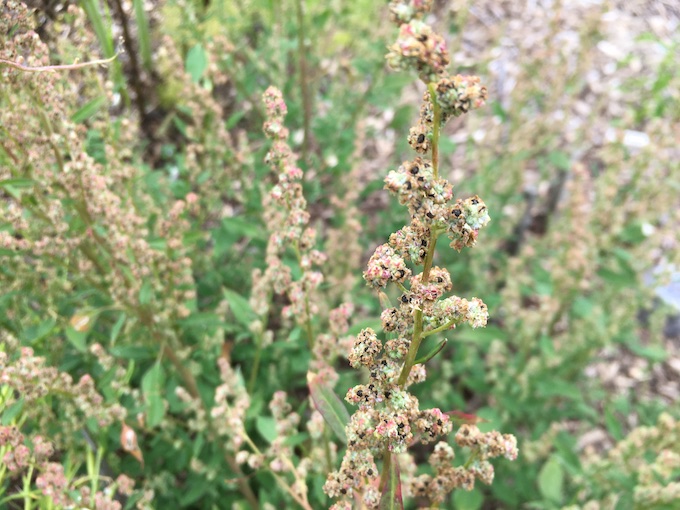
Also, did you know it’s in the same genus as quinoa (Chenopodium quinoa)? The super food that’s imported from South American countries and frequently sold for ridiculous amounts of money. If it’s this closely related, can we consider this a super food as well?
By harvesting the seeds I’m also accidentally (or purposefully) helping the plants spread their seeds again in my garden. As they easily drop to the ground once they reach the stage shown in the image above. Something to consider for sure if you want to experiment with this method of population control.
Non-food production
As you can see in the pictures at the beginning of the blog, there are also plenty of areas where the mulch manages to prevent plants from growing.
There might be an unintended consequence however: when I don’t plant these areas out with plants, and the “weeds” don’t establish, then these areas are not productive right? Well, there is definitely no food production for humans in that case. In an economic sense that might even be blasphemy, highest possible yield per m2 is the only thing that counts, isn’t it?
Long-term thinking
Well, below the surface many organisms (worms, bacteria, fungi, mites etc) are working hard at decomposing some of the mulch and turning it into more soil! This is one of the many benefits of mulching your (permaculture) garden; it kind of works like a slow-release fertiliser. Also, as you know by now it also helps keep paths and the soil covered, thereby preventing volunteers of running the show. Besides this, it helps hold moisture in the soil during dry periods. It provides food and shelter for the many bugs that live in and on the soil. And the list goes on and on..
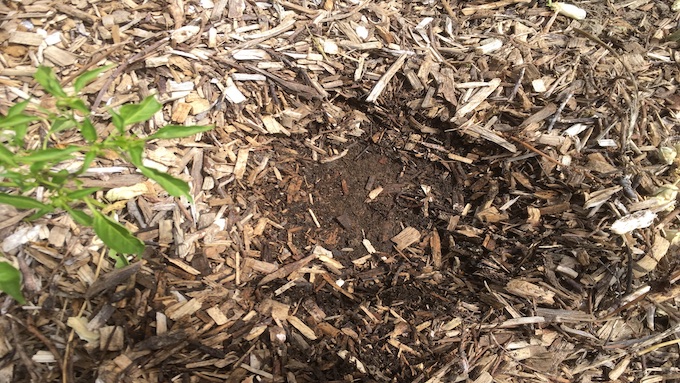
At first I definitely thought it’d be a failure if not every square meter of my little permaculture garden was producing food. But remembering some of the benefits of mulching made me realise there’s more to a garden than only growing food. Helping build a vibrant, living and diverse soil is essential for the long-term health (and productivity!) of any garden. Something I need to remind myself when I see all these “empty” spaces everywhere!
Failures with regards to the garden location for permaculture
This next ‘failure’ allows for a bit more permaculture theory with regards to the location of my garden. There’s this thing in permaculture called “zones“. They serve as one of the tools when designing a landscape.
There’s 5 zones. Each one based on frequency of use. Starting with zone 1, which is the most used zone. It has high foot traffic on a daily basis. All the way to zone 5, which are the areas of a landscape that are unused or at least unmanaged (sometimes referred to as “wilderness”).
Zone 1 will often be very close to the house. This is usually where the herb and (annual) vege garden are ideally located. This means you can easily access it and you often pass by as you go to and from the house. Each zone has a different focus and allows you to think about what is the most effective way of placing components in the landscape in relation to each other.
Theory vs. reality
Great in theory. Often used in practice. Yet not very applicable to my specific situation. I really didn’t have a choice where to locate my garden at all. Not with regards to it’s vicinity to the house, nor the specific location of the plot within the community gardens. Besides this, my permaculture garden is also so small that there’s really no use for dividing it into zones.
In addition, the bike ride to my garden is 25 minutes (or more, depending on the wind direction!). This means that visiting happens on a weekly basis, rather than daily. I’d hoped my garden would be a zone 1 garden. With lot’s of annual veges and frequently visiting for harvesting and maintenance. However, I’ve realised that in reality it should be treated more as a zone 2 garden. This means shifting my focus more on perennial veges and using methods (like deep mulch) that require less daily attention. And accepting that things can change quickly in one week. Especially in summer time…
Unwelcome guests
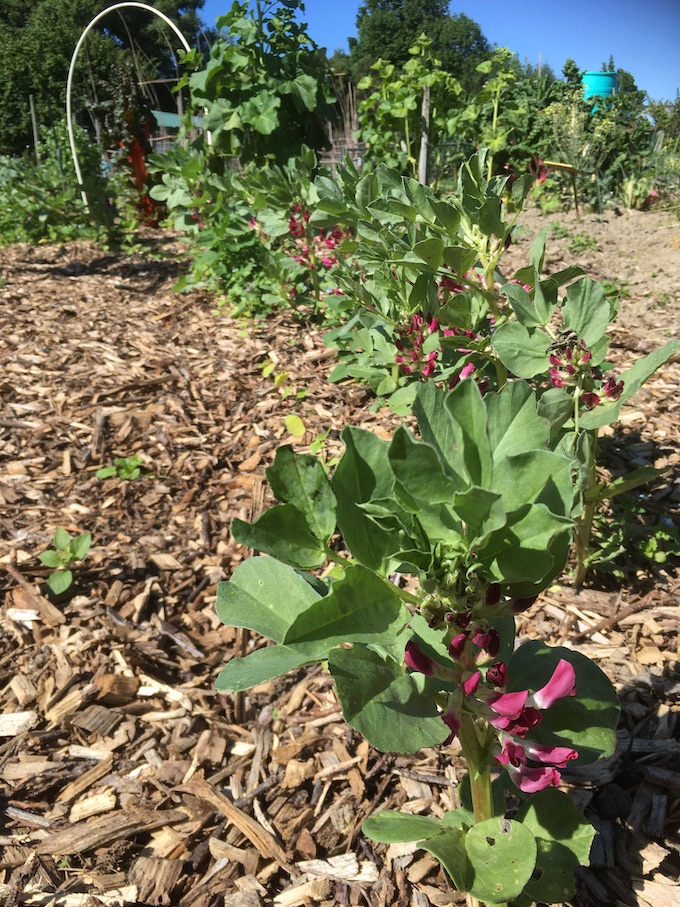
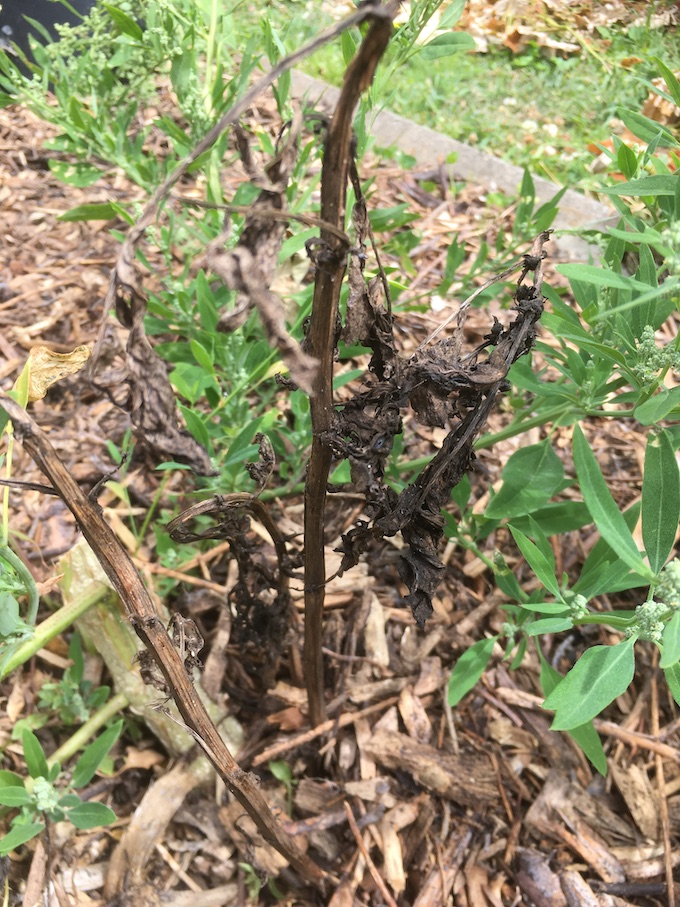
One example of this is illustrated nicely (and sadly) above. The broad beans I had been gifted were decimated by ants who were farming aphids. Looking good and happy one week, pretty much gone the next. Early on I was already aware that ants had a strong presence in the gardens. Everywhere I would lift a log, rock, or move the mulch aside I would come across ants, and heaps of em!
My one and only zucchini plant suffered quite a bit because of the farming ants. The zucchini died early on in the season. Supposedly one of the easier plants to grow, yet it was never able to establish itself. The peach tree also struggled with the ant-aphid dream team. Early in the spring it came into full flower and was looking amazing. I could almost taste the juicy peaches. However, yup, you guessed it. None of that happened. The flowers dropped before setting fruit and the leaves have been drooping all season.
Or all part of the same ecosystem?
To be fair might not count as one of the failures in my permaculture garden. Because even if I wanted to try and get rid of the ants, I don’t think I (or any of us for that matter) would be able to. Ants have been around for about 80 million years, thereby surviving the mass extinction event that killed off the dinosaurs. And, there’s at least 14 000 species of ants in the world. Talk about resilience, eh?
The learning point for me here was a beautiful reminder that all living beings, no matter how big or small, are part of your “garden ecosystem”. Zooming out far enough we know that everything is intrinsically and intricately part of the ecosystem called Earth. Similar to some of the plants we call weeds, there’s plenty of organisms that we simply don’t know what they contribute. Just because we don’t know, doesn’t mean they don’t serve a function.
Let’s not forget that ants also bring many benefits to your garden. For one, they aerate the soil extensively with their underground tunnels. They hunt many other insects, thereby contributing to pest control. And they move a similar amount of soil as earthworms! Whilst the latter are often touted as essential in a healthy garden, ants are almost never mentioned in this case.
Luckily there are also still plenty of plants that are thriving despite the omnipresence of ants. Every week I visit my garden I leave with bike bags full of veges. So, not only food for thought but also plenty of food for the stomach. Which makes all these failures in my wee permaculture garden all the more bearable.
Failures, or should I say learning opportunities in a permaculture garden?
In essence, what I’m trying to get across is that failures provide an opportunity to learn. Cliché? Definitely! Yet, oh so very true? Absolutely. Despite knowing this, in real life switching to this mindset isn’t always straightforward or easy. Especially if you’ve spent so long nurturing a plant from seed to seedling to a big and healthy plant. Only to find it dead the next time you’re in the garden…
But still, just because something didn’t go according to plan doesn’t have to mean it was a complete failure. Every time this happens – trust me, in my garden that’s often enough! – can be an opportunity to take a step back. To observe, learn and interact with your garden. Learning to adapt to what is offered to you. Working with what’s already in your garden and welcoming what shows up. That to me is one of the fundamental aspects of what permaculture is, or at least can be. As with many things in life, the more you do this the easier it becomes. It might even become a habit…
Granted, I could have chosen a different and more nuanced title. Something along the line: multiple moments of feedback (not failures) and outcomes differing from initial intentions, yet worthwhile learning opportunities in a permaculture garden. But then, let’s be honest, would you ever have read the blog post?

